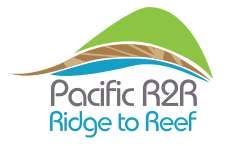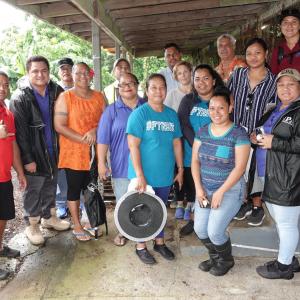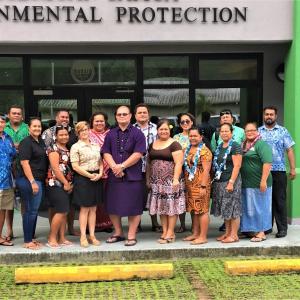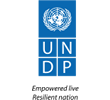Project Overview
In August 2012, the Prime Minister of the Cook Islands, the Honourable Henry Puna, announced at the opening ceremony of the 43rd Pacific Islands Forum the creation of the Cook Islands Marine Park (CIMP), encompassing approximately 1.1 million square kilometres of the country’s southern Exclusive Economic Zone (or more than 50% of country’s EEZ). By creating the CIMP, the Government signalled its commitment to sustainable development and its intention to balance economic growth interests in sectors such as such as tourism, fishing and agriculture with biodiversity conservation objectives. The proposed Ridge to Reef project will enhance the Cook Islands’ capacities to effectively manage its protected area estate and sustainably manage its productive landscapes at local scales while taking into account food security and livelihoods, including operationalization of the CIMP, and the establishment and strengthening of various forms of protected and locally managed areas within the CIMP, including Protected Natural Areas, Community Conservation Areas, and Ra’ui Sites. In so doing, the project will support the Cook Islands in maintaining traditional resource management and conservation systems and approaches, including a leading role for traditional and local leaders and the local communities that they represent in the declaration and management of protected areas, while also integrating these traditional systems into a formal legal and institutional system of protected areas. The project will support the Government in tailoring policy, regulatory and institutional frameworks to suit the specific characteristics of the Cook Islands and of the new CIMP, recognizing that protection and sustainable use will need to be zoned and planned carefully, and that tenure over most land areas is vested in local communities through a traditional tenure system. Finally, the project has been designed to engineer a paradigm shift in the management of marine and terrestrial PA sites from a site centric approach to a holistic “ridge to reef” management approach, whereby activities in the immediate production landscapes adjacent to marine and terrestrial protected areas will be managed to reduce threats to biodiversity stemming from key production activities (tourism and agriculture).
Results Framework
UNDAF Outcome(s):
UNDAF for the Pacific Sub-region 2013-2017 – Outcome Area 1: Environmental management, climate change and disaster risk management
UNDP Strategic Plan Primary Outcome:
Outcome 1: Growth and development are inclusive and sustainable, incorporating productive capacities that create employment and livelihoods for the poor and excluded.
Expected SRPD Outcomes(s):
Improved resilience of PICTs, with a particular focus on communities, through the integrated implementation of sustainable environmental management, climate change adaptation and/or mitigation and disaster risk management.
Expected SRPD Output(s):
1. Capacities of local government departments are strengthened for effective, participatory environmental governance.
2. Demonstration projects on natural resources management and biodiversity at the community level that can be scaled up are implemented, and the formulation of evidence-based policies is supported.
Executing Entity/ Implementing Partner:
National Environment Service
Implementing Entity/ Responsible Partner:
National Environment Service, Ministry of Marine Resources, Ministry of Agriculture, Cook Islands Tourism Corporation







